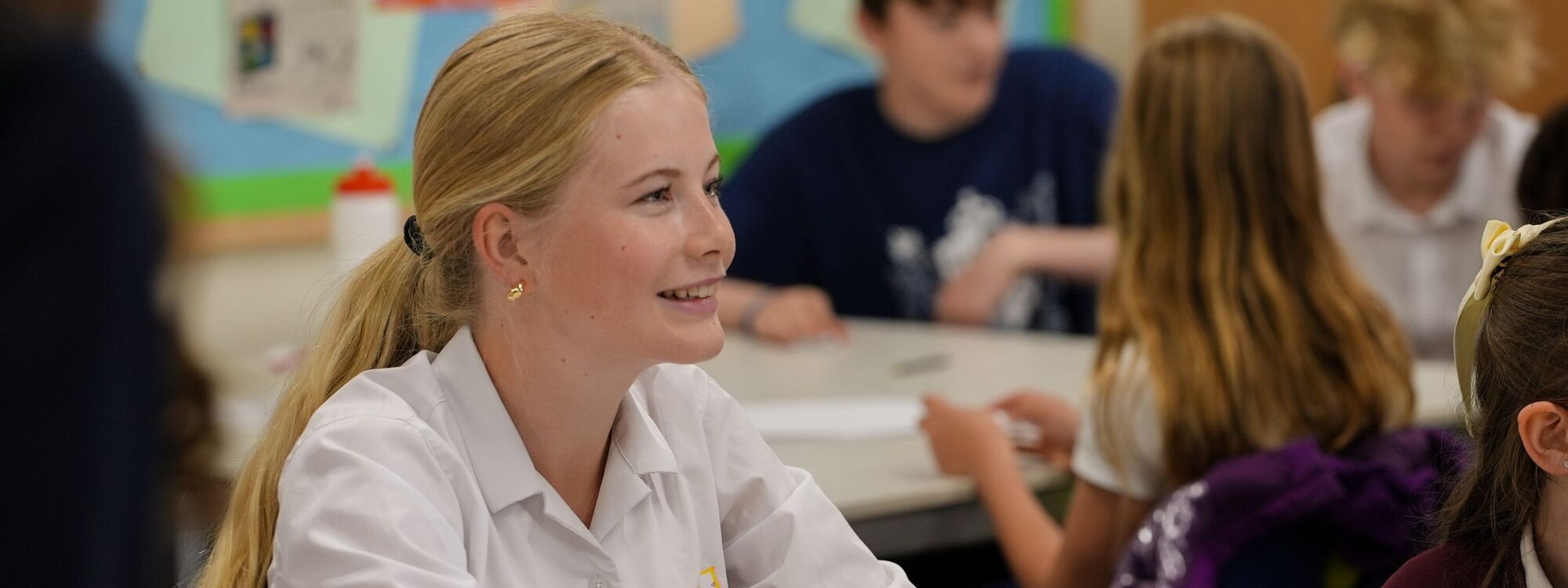Entrance Assessments
Examinations
Each candidate for Year 7 and Year 9 entry is tested in two areas: English and Mathematics. No special preparation is expected or required for the tests and past papers are not published for tests at any level. All our admissions exam papers are unique to KES; the question papers are set each year by our Heads of English and Mathematics, and we do not provide past papers.
Click on the boxes below to read more about each examination.
Interview
In addition to the examinations, applicants will attend an interview at King Edward’s as part of the application process. Our interviews are a lovely opportunity for us to get to know your child, and to find out who they are as an individual. Unlike the examinations, the interviews are not academically-focussed and are likely to involve a discussion of your child’s interests both in and outside school. They last for approximately 15 minutes, and children will be interviewed by a member of the teaching staff. These interviews also provide an opportunity for your child to find out about us and to ask any questions they may have. There is no preparation required for the interview.
Examination Papers
English Paper
| 20 minute Reading Comprehension Paper 30 minute Writing Paper |
| All our admissions exam papers are unique to KES; the question papers are set each year by our Head of English, and we do not provide past papers. Children will answer all our exams on paper (unless your child has access arrangements which permit them to use a computer for their written answers). They are not computer-based tests. The Reading Paper requires candidates to answer questions on an extract from a children’s novel. For Year 7 entry it is entirely multiple choice, whilst the exam for Year 9 entry also requires written answers. For both age groups, when answering the multiple choice questions you will be required to draw a circle around the correct answer. Initial questions involve understanding of basic plot, later ones might ask for interpretation or analysis of language. The Writing Paper requires students to choose one option from several choices: they may be asked to write a letter, the words for a speech, a debate, a story, a newspaper article and so on. Spelling and punctuation are very important, but focus and structure are also rewarded. The best answers are lively, original and full of flair. |
Mathematics Paper
| 45 minute paper (calculators are not permitted) |
| All our admissions exam papers are unique to KES; the question papers are set each year by our Head of Mathematics, and we do not provide past papers. Children will answer all our exams by writing their answer in the spaces indicated on the question paper (unless your child has access arrangements which permit them to use a computer for their written answers). They are not computer-based tests. This paper checks basic numerical skills, algebra, measurement, geometry and statistics. Candidates are also expected to demonstrate problem solving skills and mathematical reasoning. Questions may be set from the following: |
| Year 7 Entry | Year 9 Entry (Year 7 Material is assumed) |
| Addition and subtraction of integers and decimals; long multiplication of integers; or division by one or two digit integers; addition, subtraction and multiplication of simple decimals; making sensible estimates of everyday objects; simplifying fractions; finding fractions of quantities; simple percentages; use of common imperial or metric units in context. Recognising number patterns; knowing prime numbers and square numbers up to 10 x 10; Cartesian co-ordinates; using simple formulae; understand the meaning of factor and multiple; use correctly the symbols <, > and =; understand the use of brackets to determine the order of operations. | The four basic operations applied to fractions; ratios, calculations with decimals, use of estimation to check calculations. Generating sequences using formulae; co-ordinates in all quadrants; solving simple equations or inequalities; simplifying algebraic expressions; substituting numbers into a formula. The graphical representation of simple linear equations. Understanding the meaning of square, square root, cube and cube root; use index notation and know the laws for multiplying and dividing positive integer powers. |
| Recognise that angles on a straight line total 180o and the sum of the angles of a triangle is 180o. Simple 2D and 3D shapes; visualise 3D shapes from 2D drawings; reflective and rotational symmetry; translation; finding perimeters, areas or simple volumes; angles. Know how to convert one metric unit to another and know the rough metric equivalents of imperial units in daily use; use units of time – seconds, minutes, hours, days and weeks and know the relationship between them. | 2D and 3D shapes; area of plane shapes or volumes of simple solids; types of quadrilaterals; Pythagoras’ Theorem. Find an exterior or interior angle of a regular polygon. Transformations: Rotation, Reflection, Translation and Enlargement. |
| Interpretation of statistical diagrams (bar charts, pie charts, etc); estimation of probability on the scale of 0 to 1; mean, mode and range of a set of data. | Probability; outcomes of combining two independent events. Have a basic understanding of correlation and be able to use a line of best fit. |




